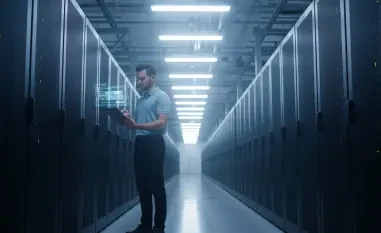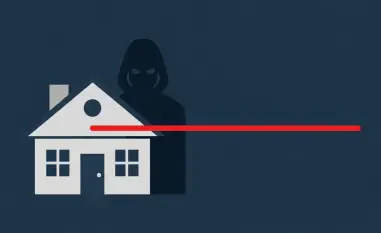In an era marked by persistent and evolving cyber threats, the need for robust cybersecurity measures has never been more pressing. Cyber Rhino Threat Week, organized by ThreatQuotient, promises to be a pivotal platform in addressing these challenges. The week-long event, scheduled from December 9th to December 13th, 2024, aims to unite senior cybersecurity leaders and practitioners from various sectors. Through a series of dedicated sessions, the event emphasizes intelligence sharing and collaboration to enhance defense mechanisms against cyber threats. By bringing together thought leaders and practitioners, Cyber Rhino Threat Week seeks to foster an environment where insights and strategies can be shared effectively, ultimately strengthening cybersecurity collaboration across industries.
Uniting Cybersecurity Leaders
Cyber Rhino Threat Week’s primary goal is to bring together thought leaders and practitioners from diverse organizations. By fostering a collaborative environment, the event allows participants to share insights and strategies essential for tackling the diverse challenges in modern cybersecurity. This collective approach is crucial, considering that no single organization can tackle the breadth of today’s cyber landscape alone. The sessions are meticulously curated to cover a range of topics, each relevant to contemporary cybersecurity challenges. From navigating the evolving threat landscape to defining organizational responsibilities, the event addresses core issues facing the industry. Such convergence of expertise and experiences is expected to lead to groundbreaking discussions and solutions that could benefit the broader cybersecurity community.
Throughout the week, attendees will have the opportunity to engage with experts on various critical topics. These will include understanding changing threat dynamics and the importance of defined organizational roles in managing cyber intelligence. The extensive lineup of speakers includes professionals from both private sector companies and government agencies, bringing a diverse set of experiences and solutions to the table. This blend of public and private sector knowledge is likely to offer fresh, multifaceted perspectives on dealing with cyber threats. Overall, the event aims to be a cornerstone for collaborative efforts, where each participant can learn from the experiences and strategies of others, thereby enhancing the overall cybersecurity posture of their respective organizations.
Emphasizing Collective Intelligence
At the heart of Cyber Rhino Threat Week is the principle of collective intelligence. The event highlights the importance of pooling information and insights to create a more comprehensive understanding of threats. By sharing threat intelligence, organizations can identify patterns and act proactively against potential cyber attacks. Sessions such as “A Collaborative Approach to Cyber Threat Intelligence Sharing: Strategies, Challenges, and Best Practices” delve into how collaboration can be optimized. The distinguished speakers, including Rebecca Gibergues of FS-ISAC and Bence Horvath of CPX, will explore strategies to overcome challenges in intelligence sharing and outline best practices.
Emphasizing collective intelligence aims to break down the traditional silos that often hinder effective threat response. Instead of operating in isolation, organizations can benefit from the shared knowledge and experiences of their peers. This approach allows for a more proactive stance, enabling faster detection and mitigation of threats. The discussions are expected to cover the entire spectrum of threat intelligence, from data collection and analysis to the dissemination of actionable insights. By fostering a culture of collaboration and information sharing, Cyber Rhino Threat Week endeavors to create a more resilient cybersecurity framework that can withstand the increasingly complex threat landscape.
Adaptive Strategies in Vulnerability Management
Vulnerability management is a dynamic challenge that requires constant adaptation to new threats. Cyber Rhino Threat Week addresses this need through sessions focusing on adaptive strategies. For instance, “Taking a Threat Adapted Approach to Vulnerability Management” discusses how organizations can tailor their approaches to evolving threats. Participants in this session will gain insights from experts like Will Baxter of Team Cymru and Tyler Howerton, a Senior Intelligence Analyst at a major US-based airline. These discussions are expected to provide actionable strategies to enhance vulnerability management protocols, making organizations more resilient against emerging threats.
Adaptive strategies are crucial because the threat landscape is continuously changing, often in unpredictable ways. Cyber Rhino Threat Week aims to equip participants with the knowledge and tools necessary to stay ahead of these changes. By understanding the latest trends and methods employed by cyber adversaries, organizations can refine their vulnerability management processes. This is not just about reacting to threats but anticipating them and implementing measures to mitigate risks before they manifest. The sessions will likely offer a mix of theoretical insights and practical advice, enabling attendees to take proactive steps in their cybersecurity efforts.
Creating High-Quality Threat Intelligence Reports
One of the critical aspects of effective threat intelligence is the production of high-quality reports. The session “What Makes a Good Threat Intelligence Report?” is dedicated to exploring this topic. High-quality reports are essential for understanding and mitigating risks, as they provide actionable and timely information. Experts like Gabi Reish of Cybersixgill and Jérémy Couture, Head of SOC for Paris 2024, will share their perspectives on the components of a robust intelligence report. By learning from these insights, participants can improve their reporting processes, making their intelligence programs more effective and impactful.
The importance of high-quality threat intelligence reports cannot be overstated. They serve as the foundation for informed decision-making, guiding organizations in their cybersecurity measures. A good report should not only analyze current threats but also anticipate potential future risks. This requires a thorough understanding of threat actors, their tactics, and the broader cyber environment. The session aims to delve into these aspects, providing a comprehensive guide to creating reports that are both insightful and actionable. Participants can expect to gain a nuanced understanding of how to structure their reports, what data to include, and how to ensure the information is timely and relevant. This will ultimately lead to more effective threat intelligence programs and better-protected organizations.
Leveraging Community Insights for Enhanced Security
The concept of leveraging community insights to enhance security operations is another focal point of Cyber Rhino Threat Week. The session titled “Harnessing Collective Insight: Successes in Leveraging a Threat Intelligence Community” showcases success stories and best practices from industry leaders. Speakers such as John Barth of Google Cloud and Michael Daniel of Cyber Threat Alliance will share how their organizations benefit from collective insights. Such discussions are aimed at encouraging more organizations to engage in community-driven intelligence efforts, which can lead to more robust and effective security strategies.
Community-driven efforts are essential for a more comprehensive approach to cybersecurity. By tapping into the collective wisdom and experience of a wider community, organizations can gain insights that might not be available through internal channels alone. These community insights can help in identifying emerging threats, understanding new tactics employed by adversaries, and developing collaborative strategies for mitigation. The session on leveraging community insights aims to demonstrate the tangible benefits of such an approach, providing attendees with real-world examples and actionable strategies they can adopt in their own organizations. This not only enhances individual organizational security but also contributes to a stronger, more resilient cybersecurity ecosystem as a whole.
Promoting Strategic Partnerships and Technological Integration
Another significant theme of Cyber Rhino Threat Week is the promotion of strategic partnerships and technological integration. The event underscores the importance of forming alliances and leveraging advanced technologies to tackle cyber threats effectively. By integrating various data sources and collaborating across sectors, organizations can create a unified front against cyber adversaries. Sessions will explore how strategic partnerships can enhance data sharing and the role of technology in streamlining intelligence operations. This integrated approach is vital for building comprehensive defenses that can adapt to rapidly changing threat landscapes.
Strategic partnerships enable organizations to pool resources, share expertise, and develop more robust defenses against cyber threats. By collaborating with other entities, whether they are industry peers, government agencies, or technology providers, organizations can leverage a wider range of tools and insights. This collaborative approach not only enhances individual organizational security but also benefits the broader cybersecurity community. Integrating advanced technologies, such as AI and machine learning, can further enhance these efforts by automating threat detection and response, making them more efficient and effective. The sessions on strategic partnerships and technological integration aim to provide a roadmap for organizations looking to enhance their cybersecurity measures through collaboration and innovation.
The Imperative of Adaptation and Best Practices
Cyber Rhino Threat Week centers on the principle of collective intelligence, underscoring the importance of sharing information to better understand and combat cyber threats. By pooling threat intelligence, organizations can detect patterns and preemptively counter potential attacks. Sessions like “A Collaborative Approach to Cyber Threat Intelligence Sharing: Strategies, Challenges, and Best Practices” focus on optimizing this collaboration. Esteemed speakers, including Rebecca Gibergues of FS-ISAC and Bence Horvath of CPX, will discuss methods to overcome hurdles in intelligence sharing and outline proven practices.
The emphasis on collective intelligence aims to dismantle traditional silos that impede effective threat response. Instead of working in isolation, organizations benefit from the shared insights and experiences of their peers, facilitating faster threat detection and mitigation. The event will cover a broad range of topics in threat intelligence, from data gathering and analysis to the sharing of actionable insights. By promoting a culture of collaboration, Cyber Rhino Threat Week aspires to create a more resilient cybersecurity framework capable of withstanding an increasingly complex threat landscape.













